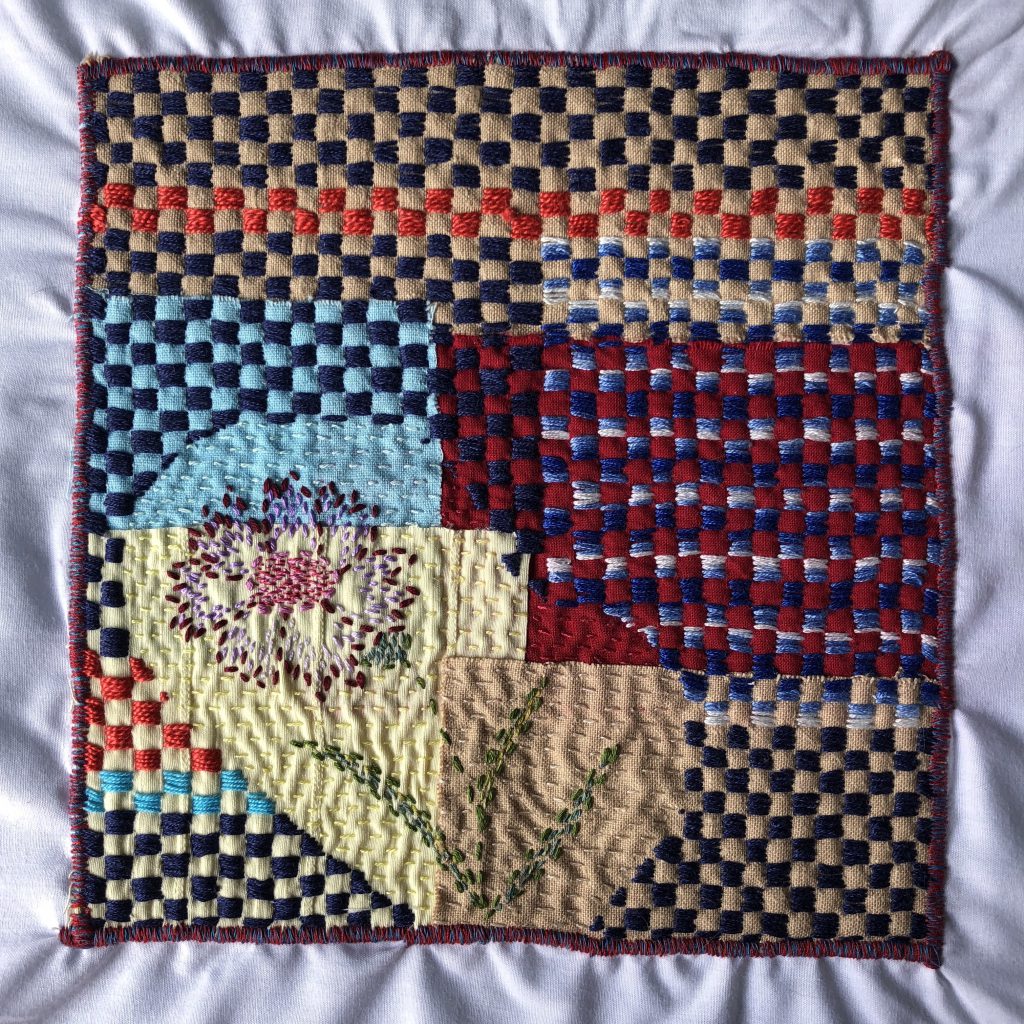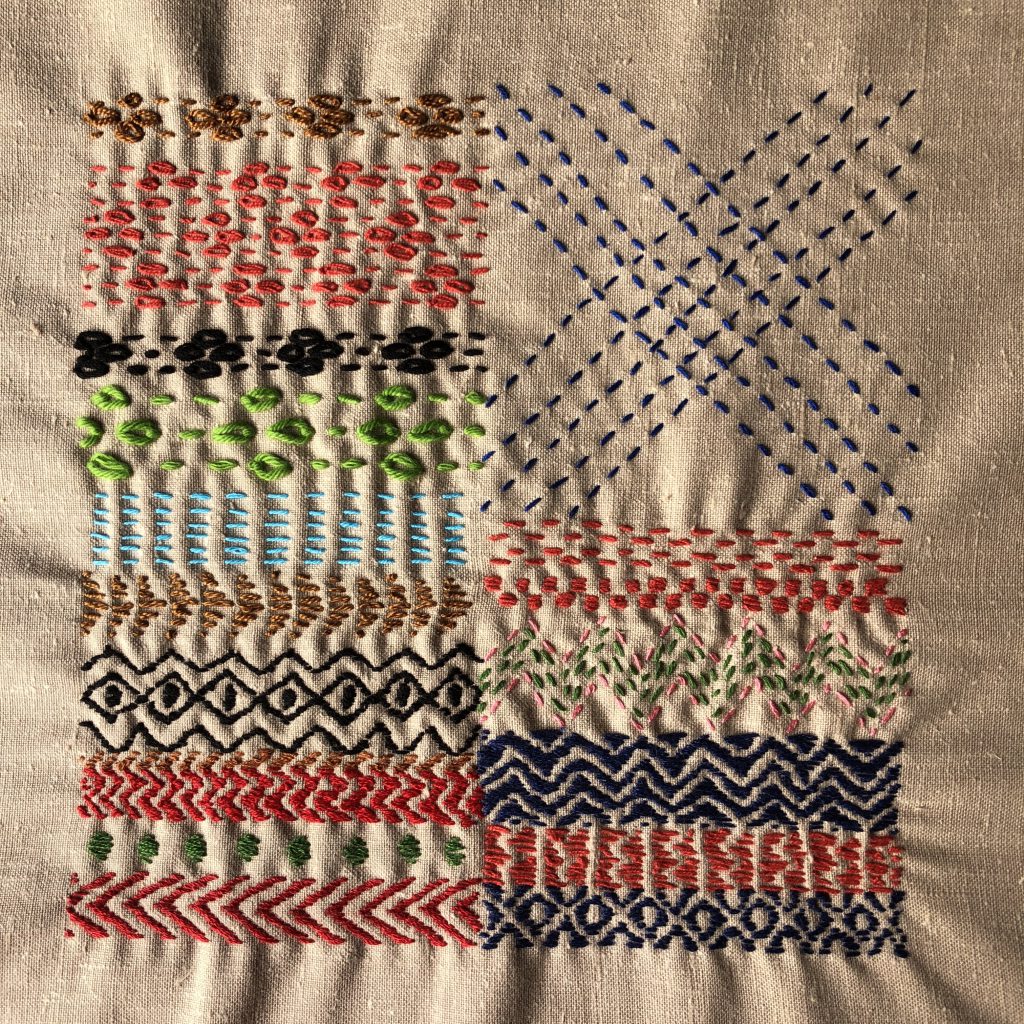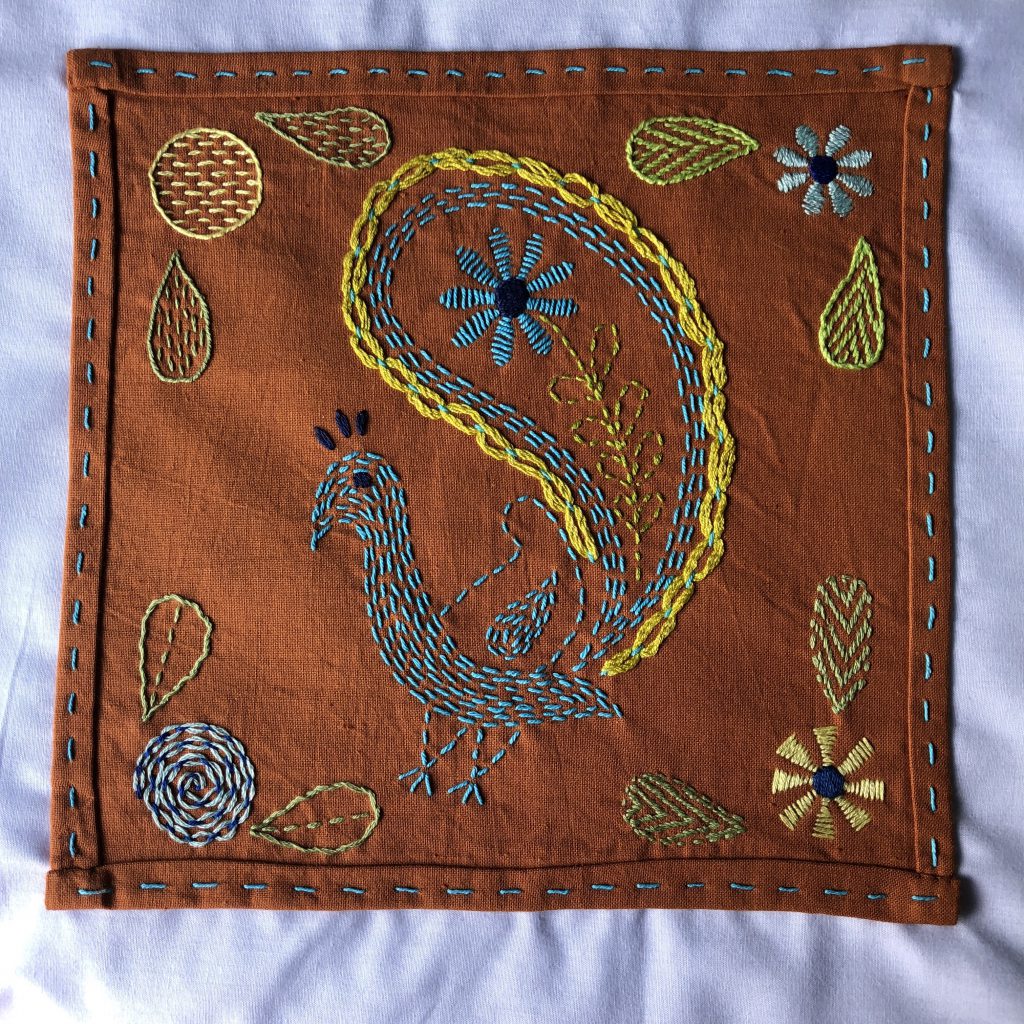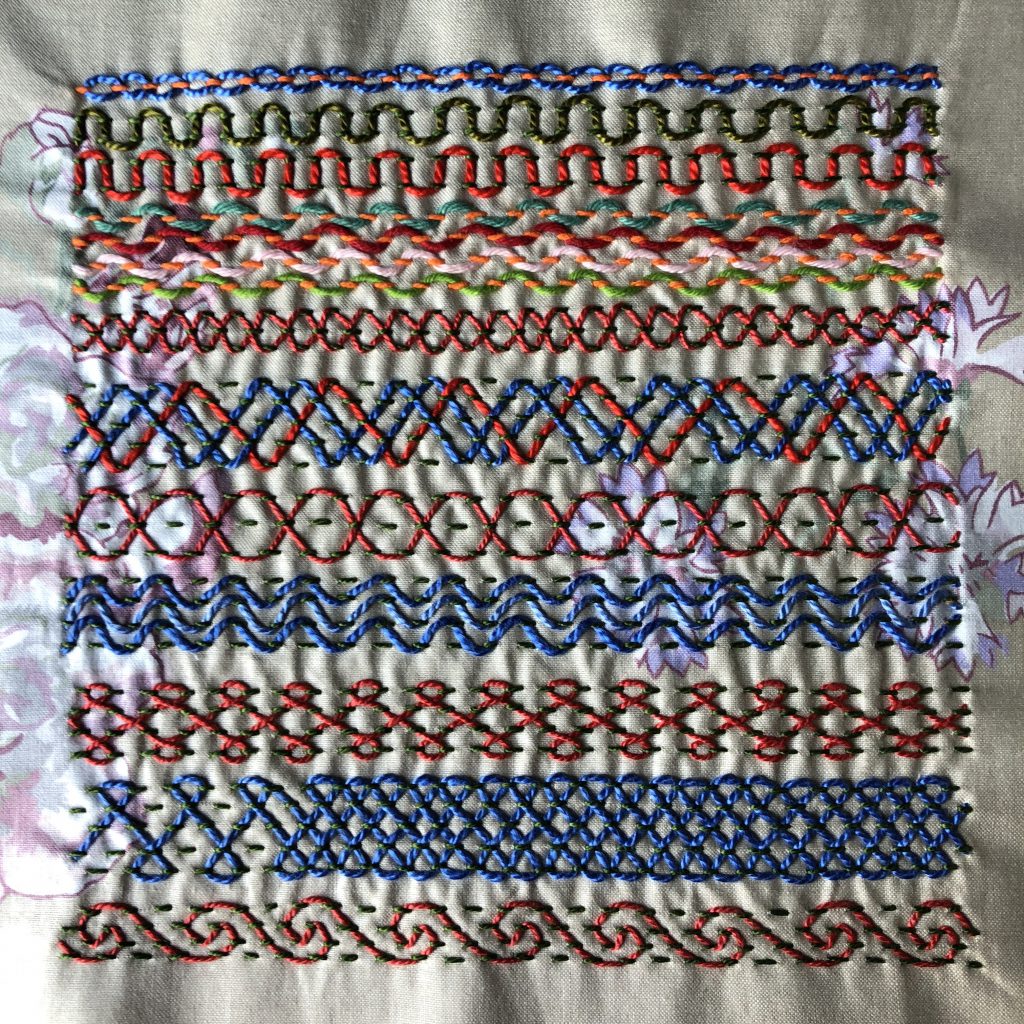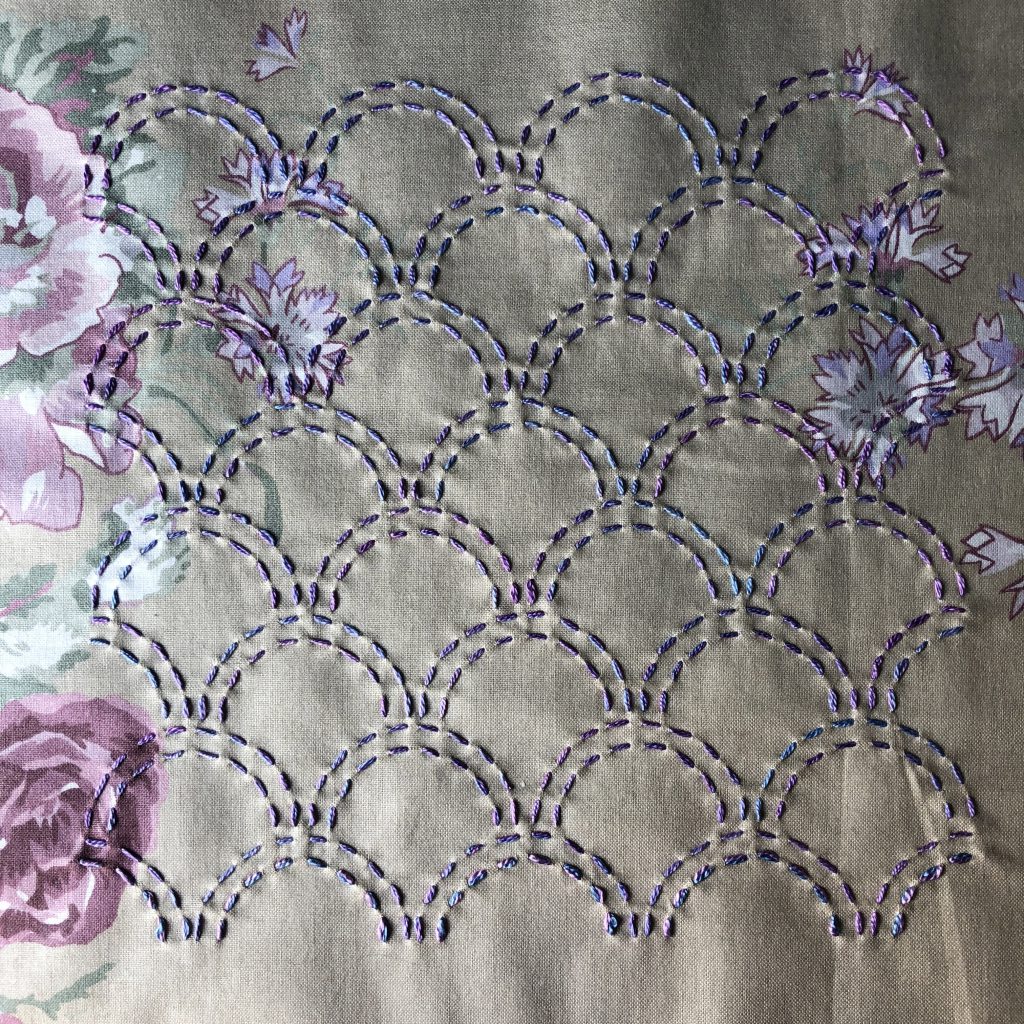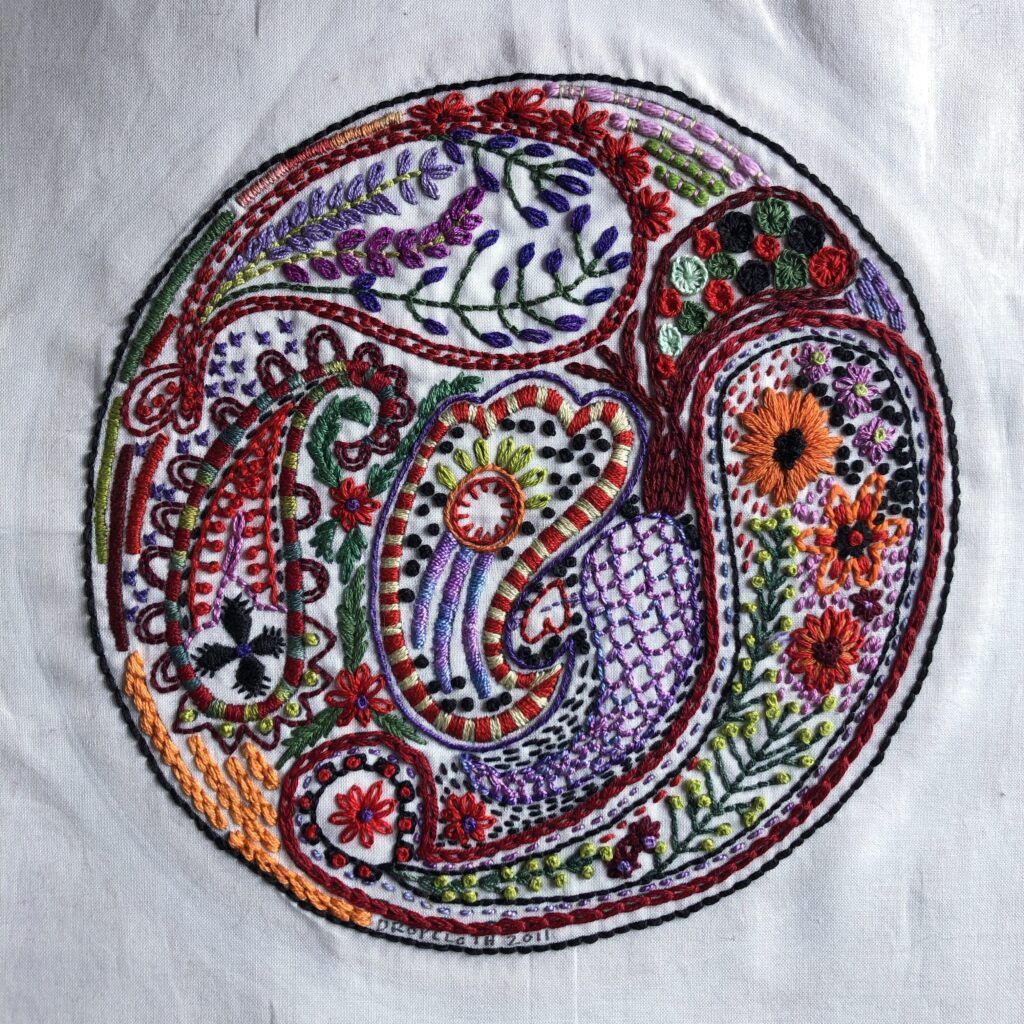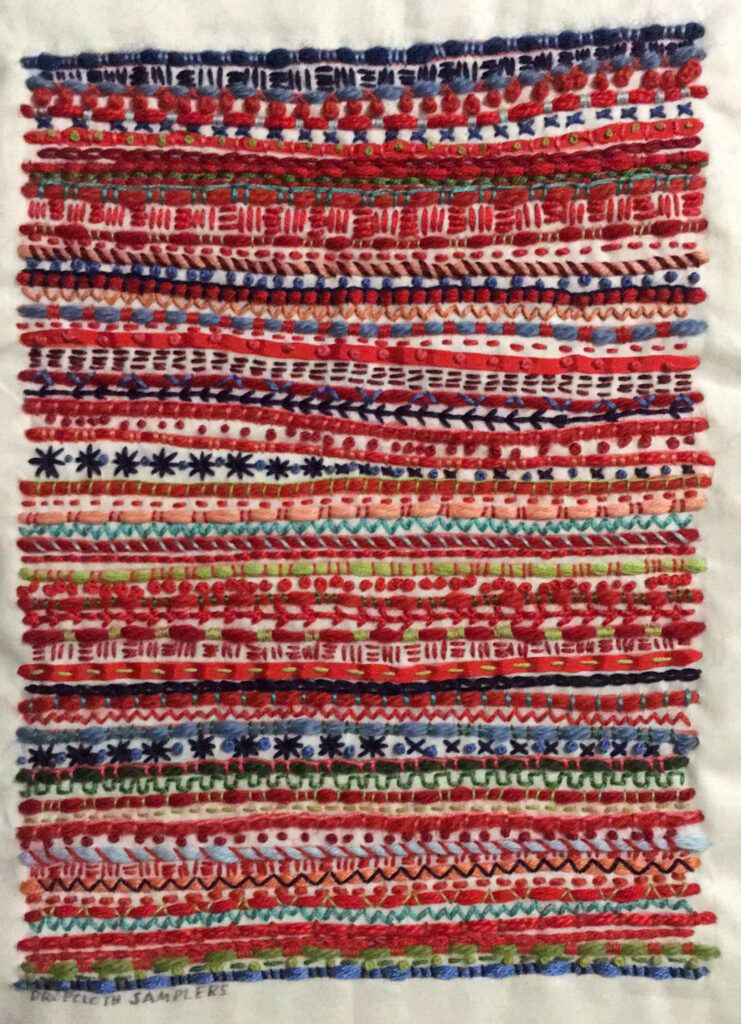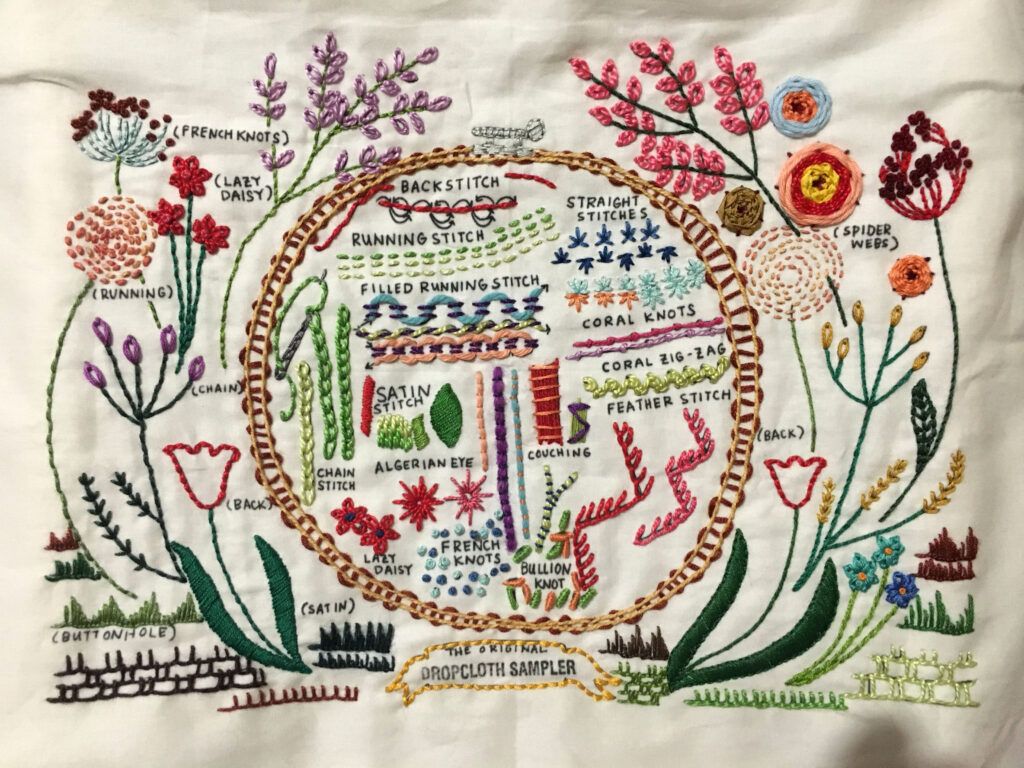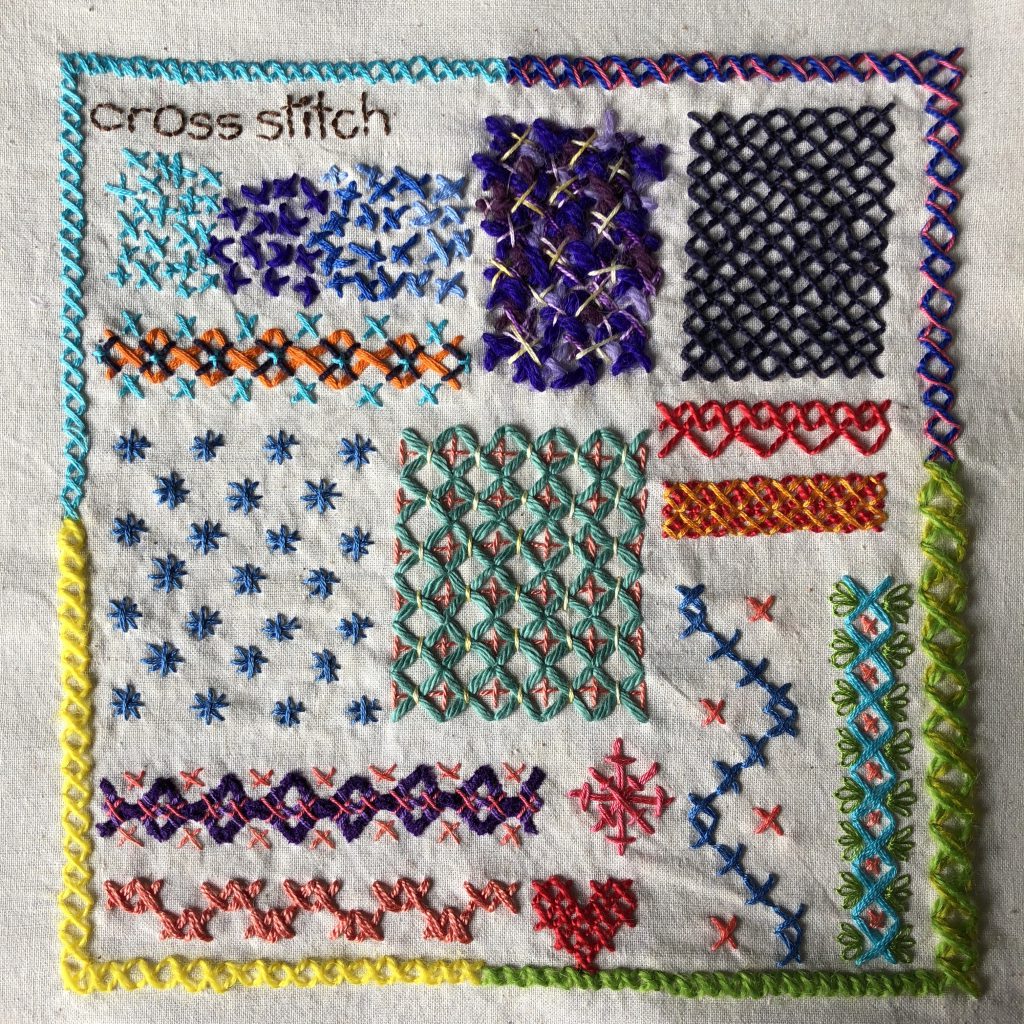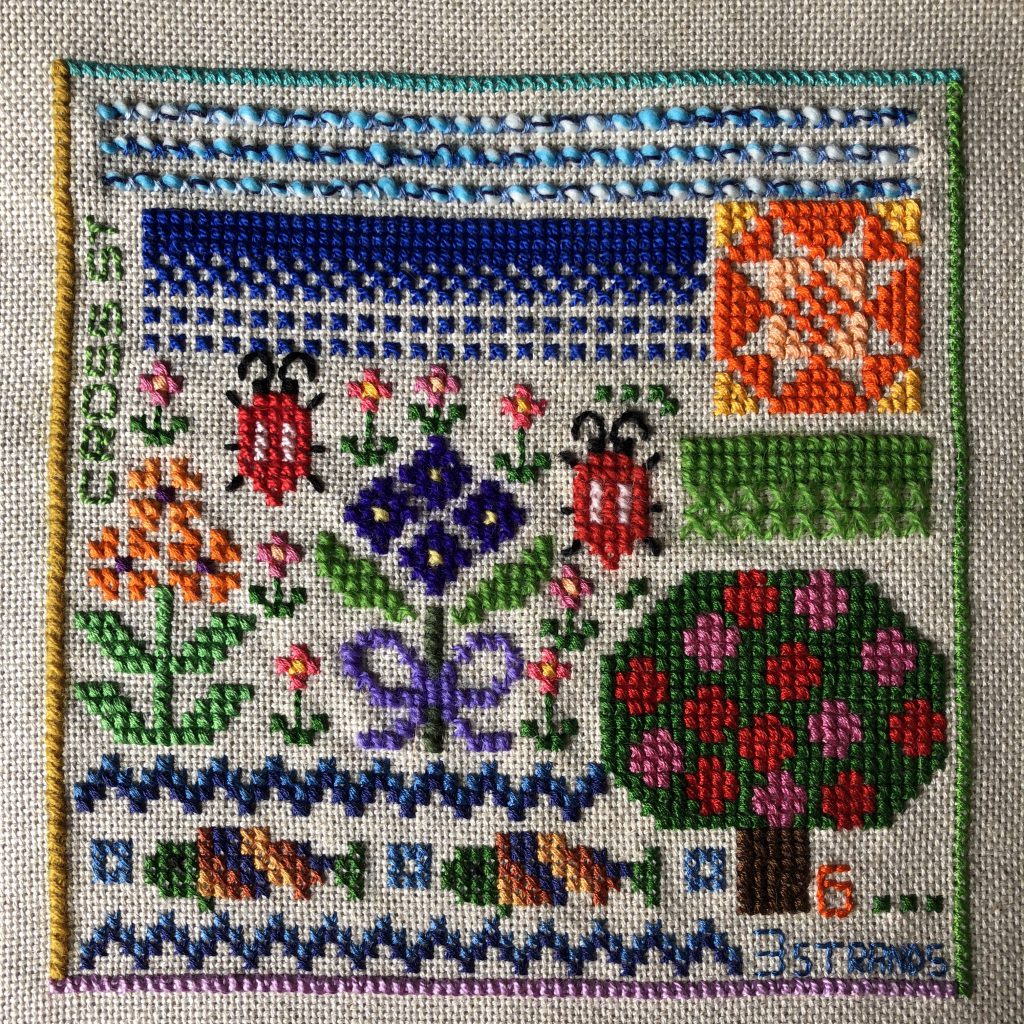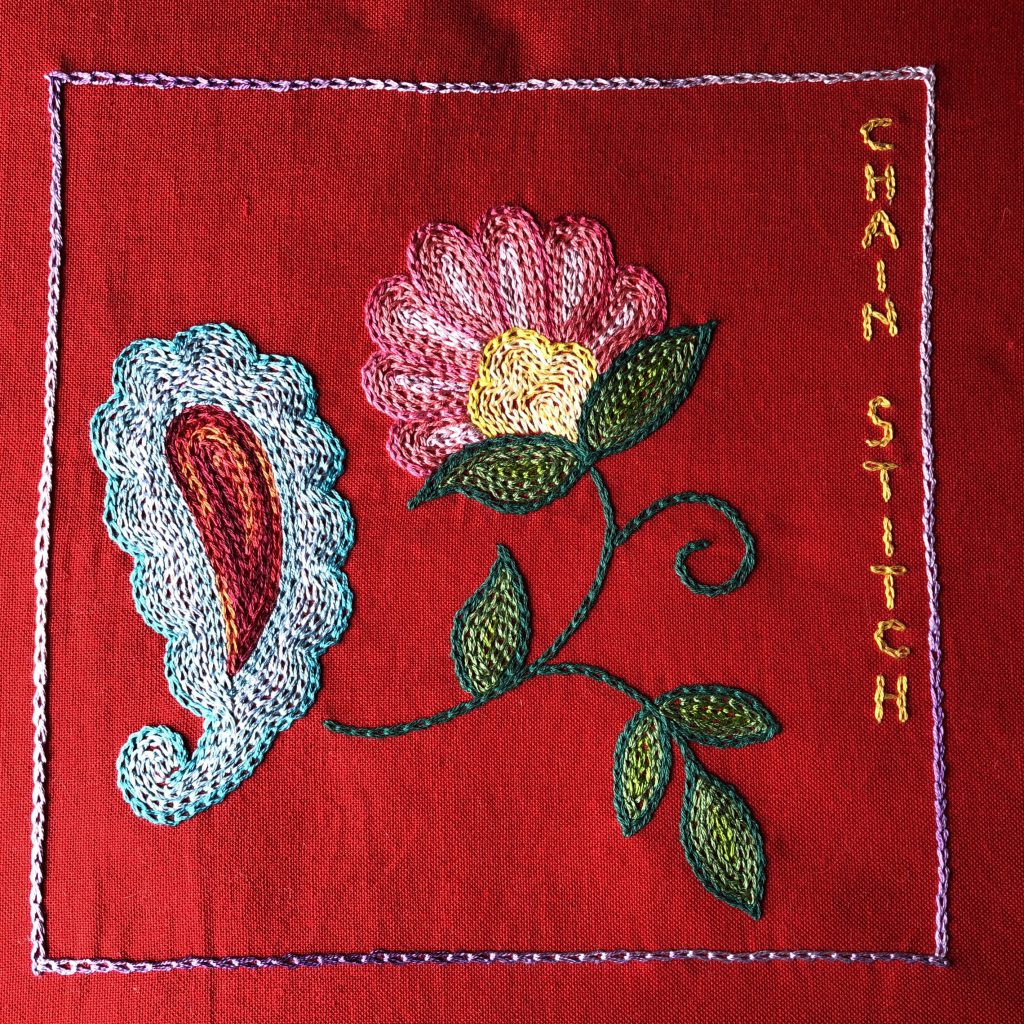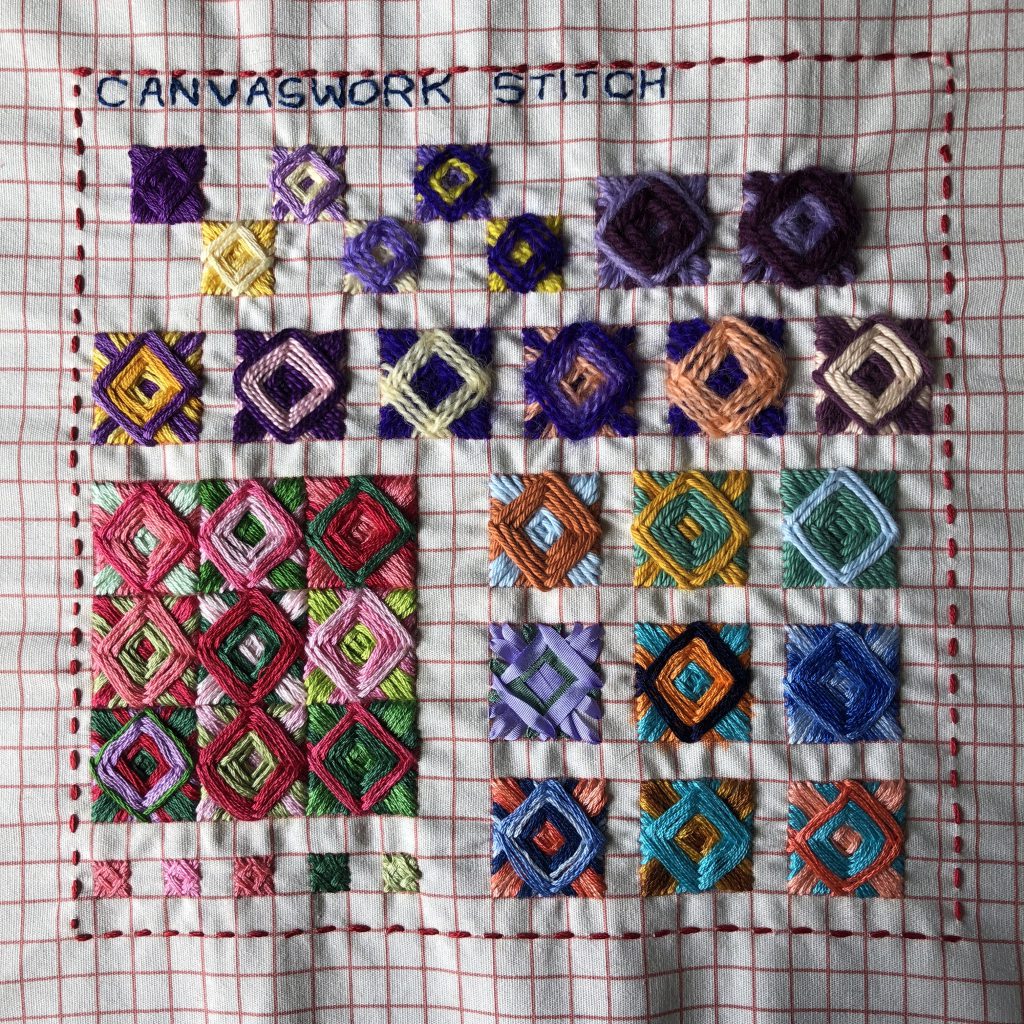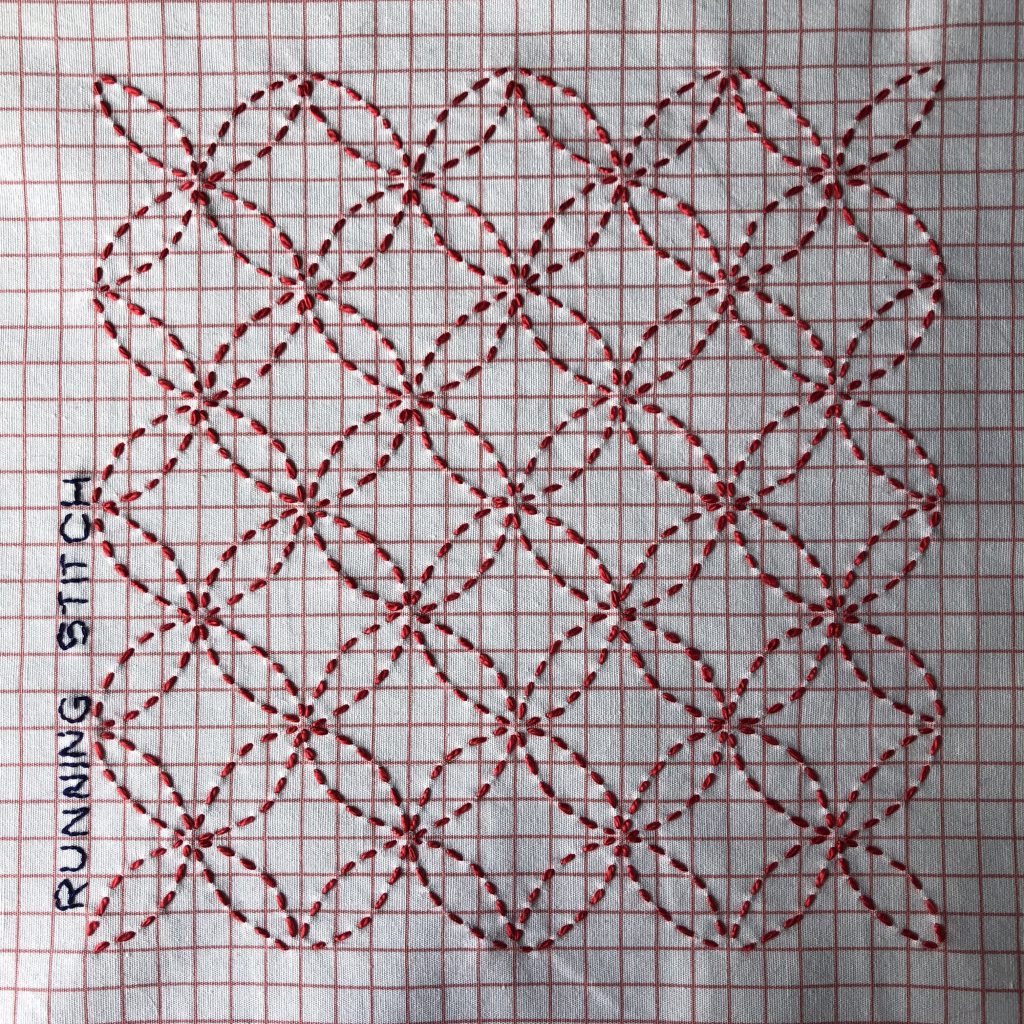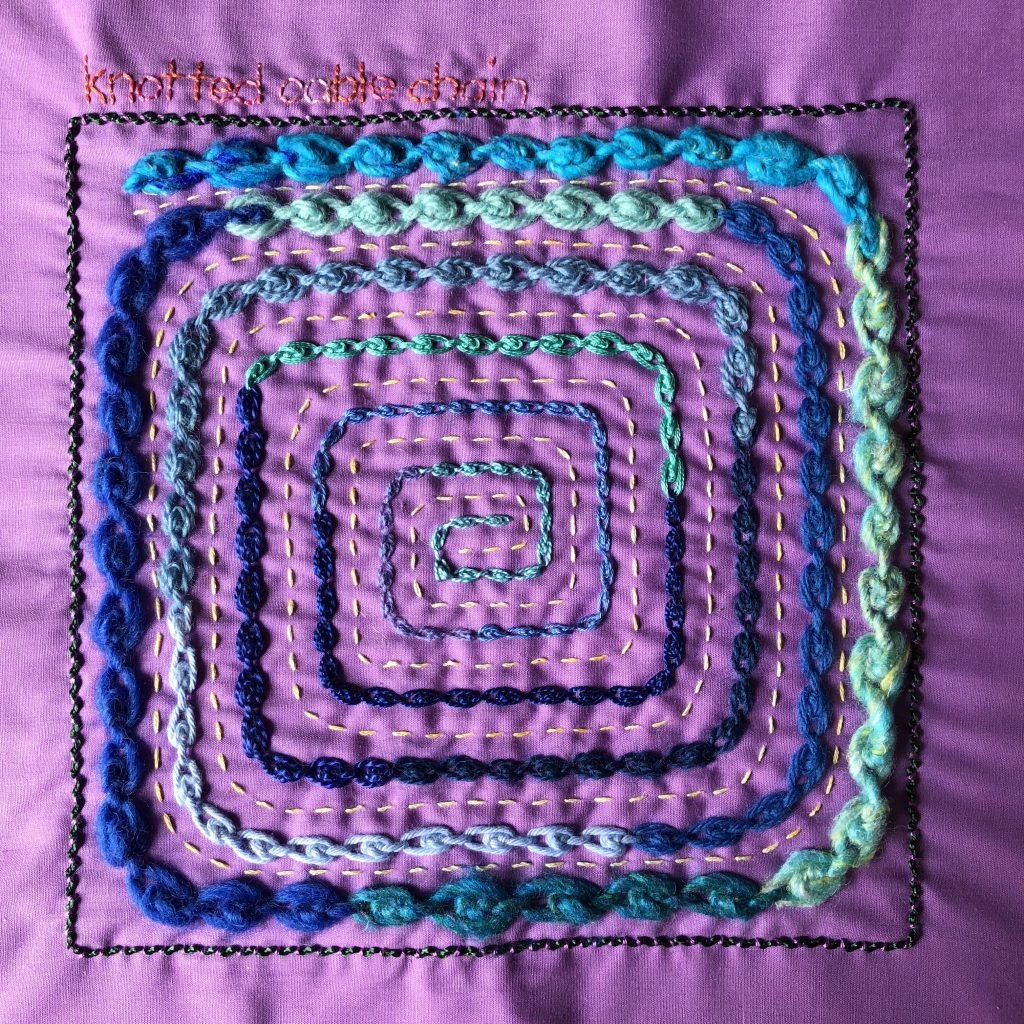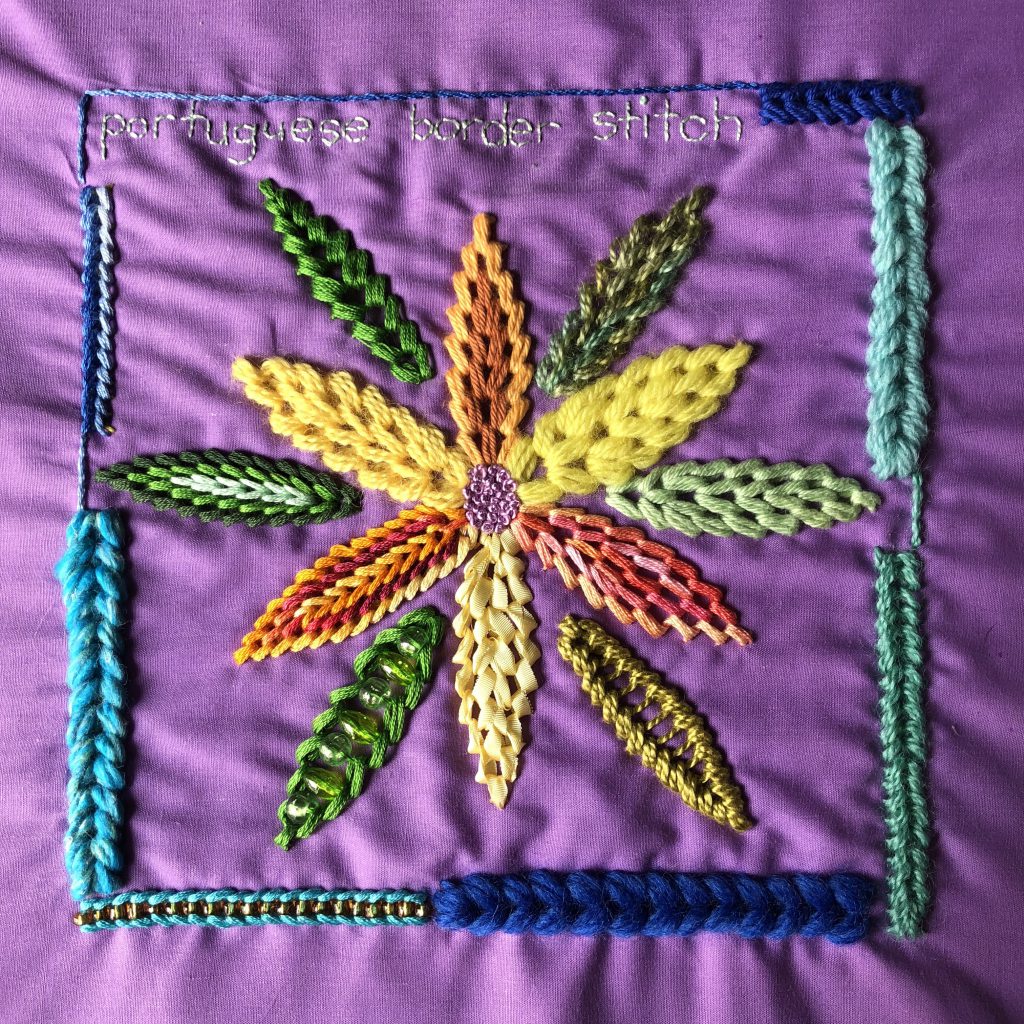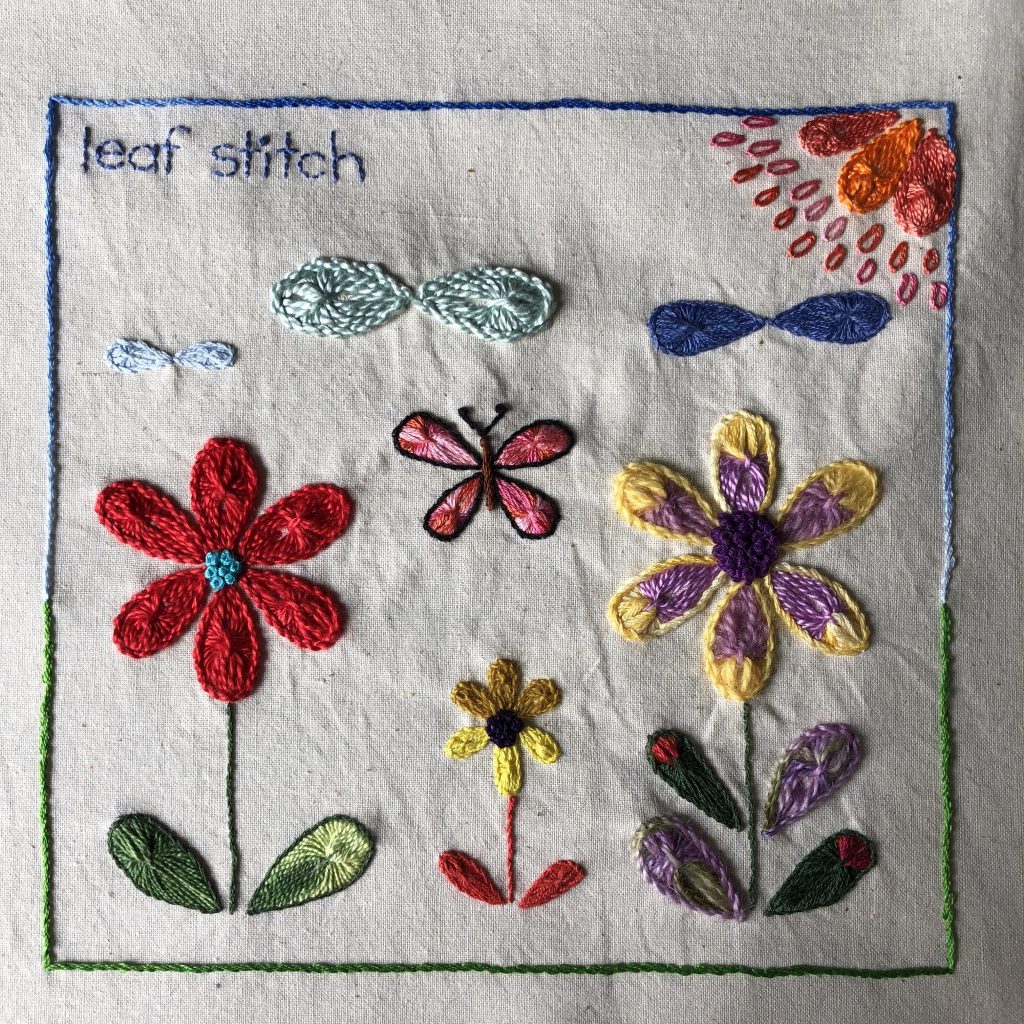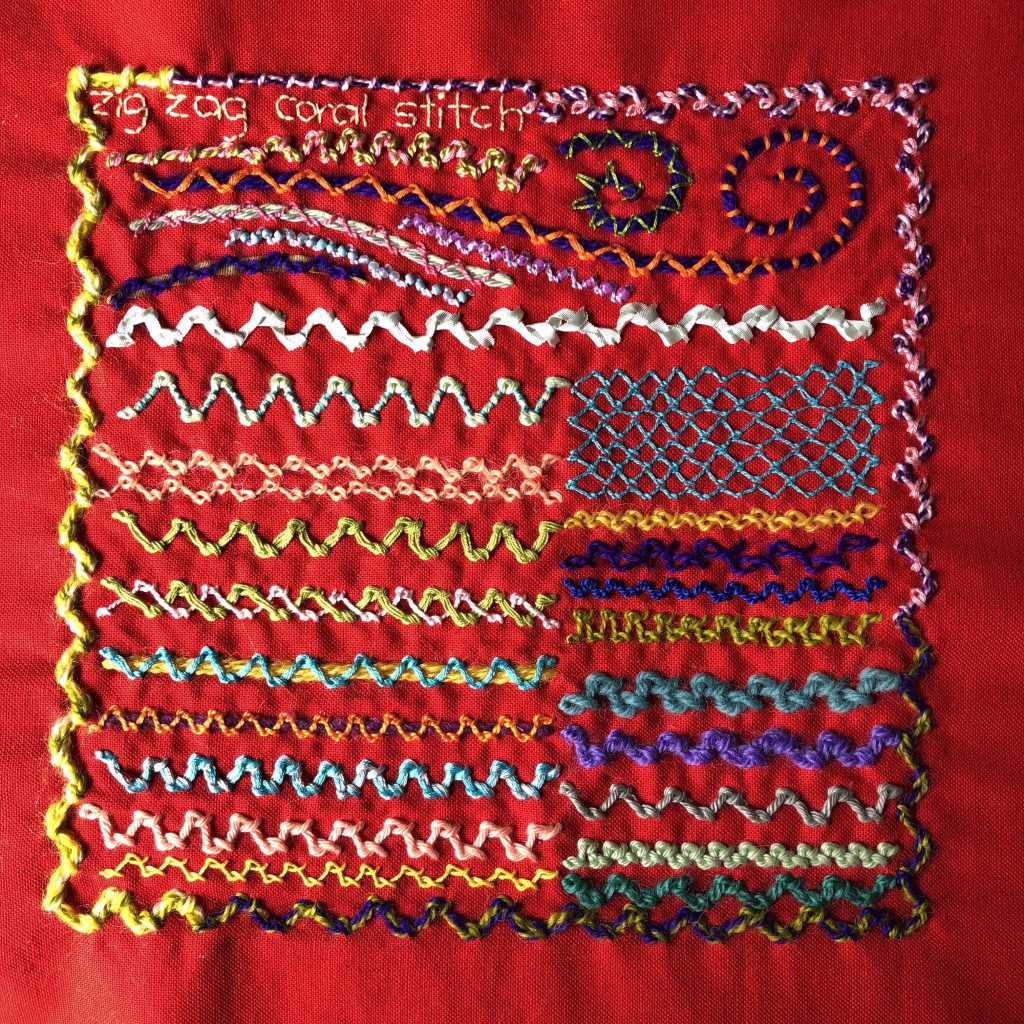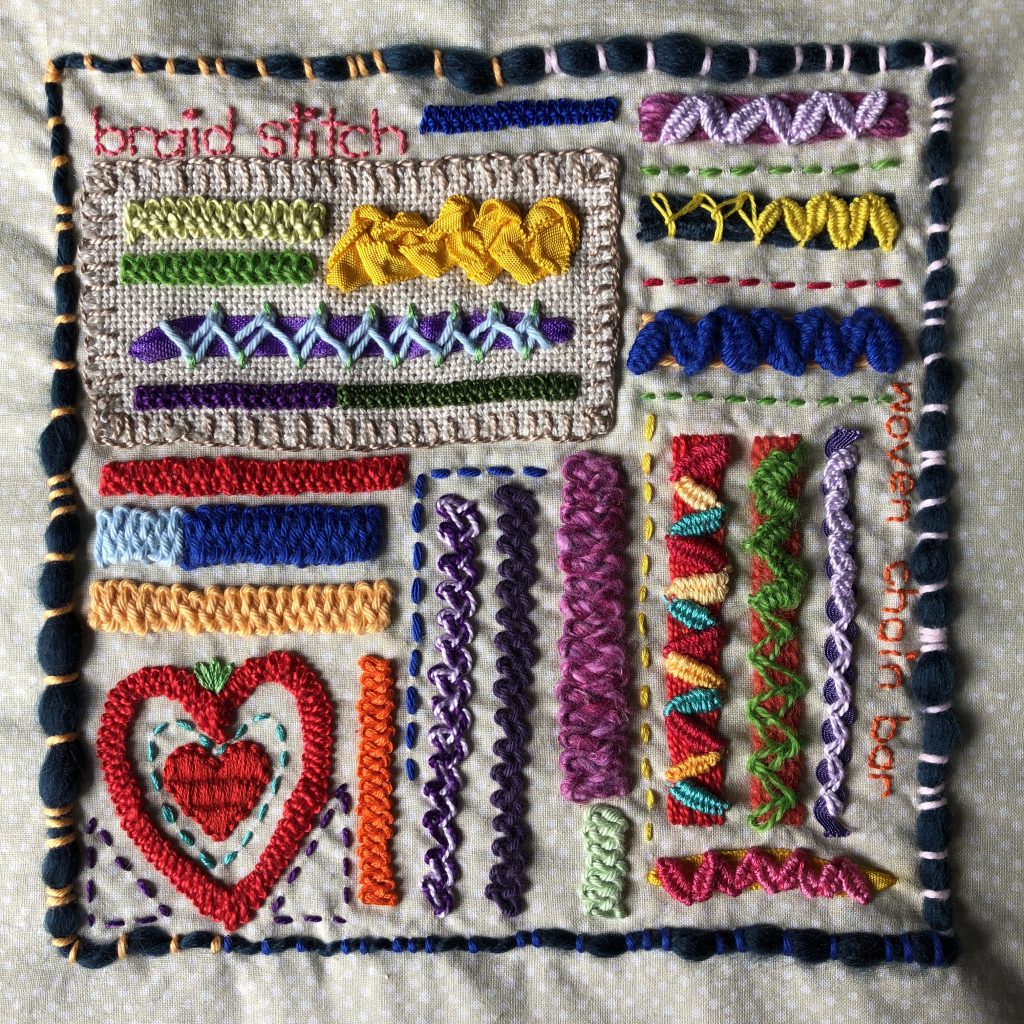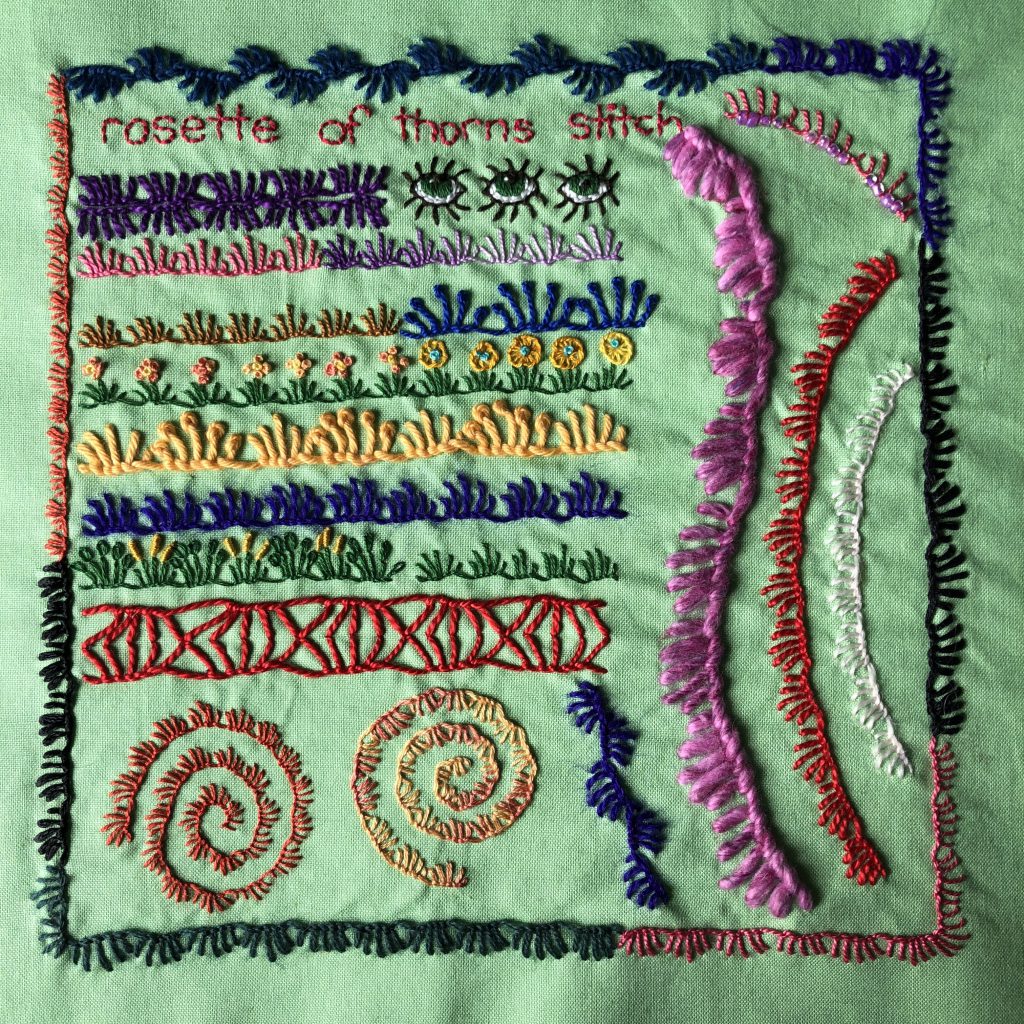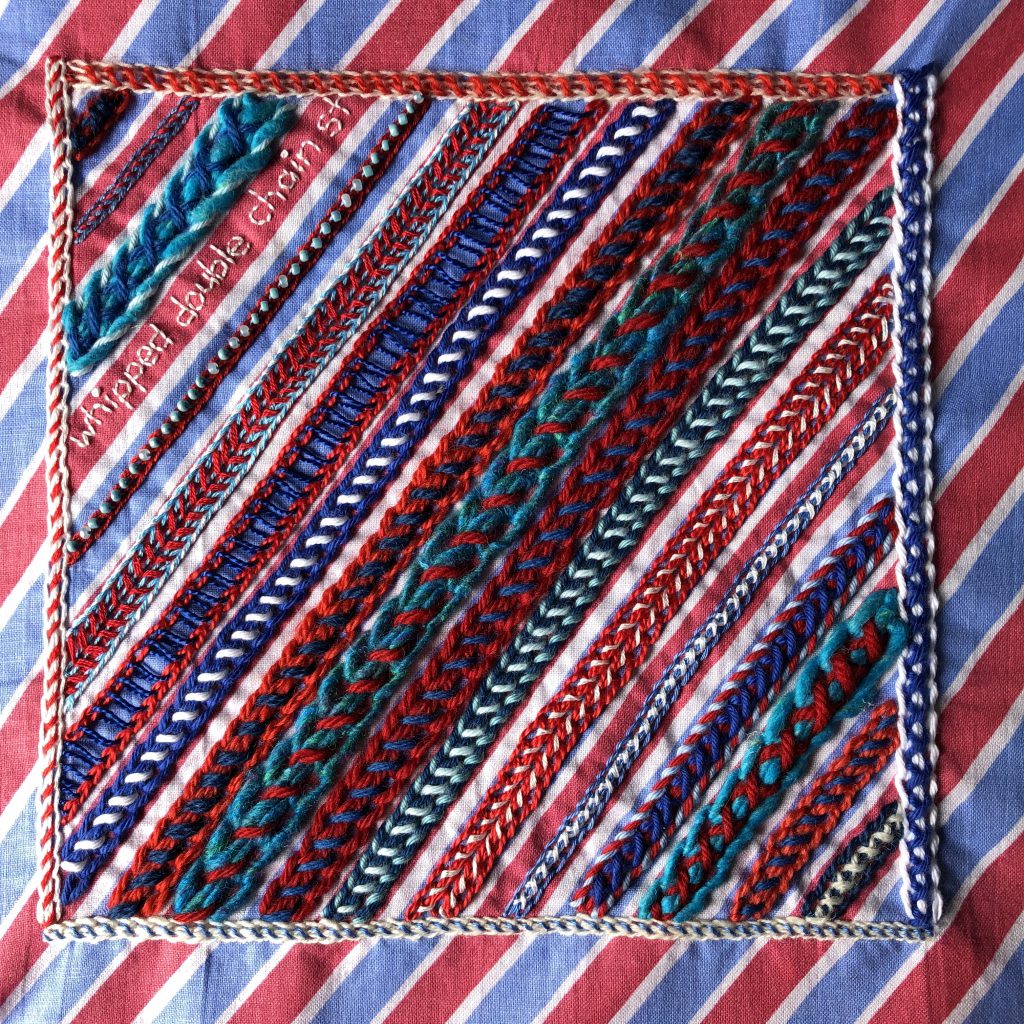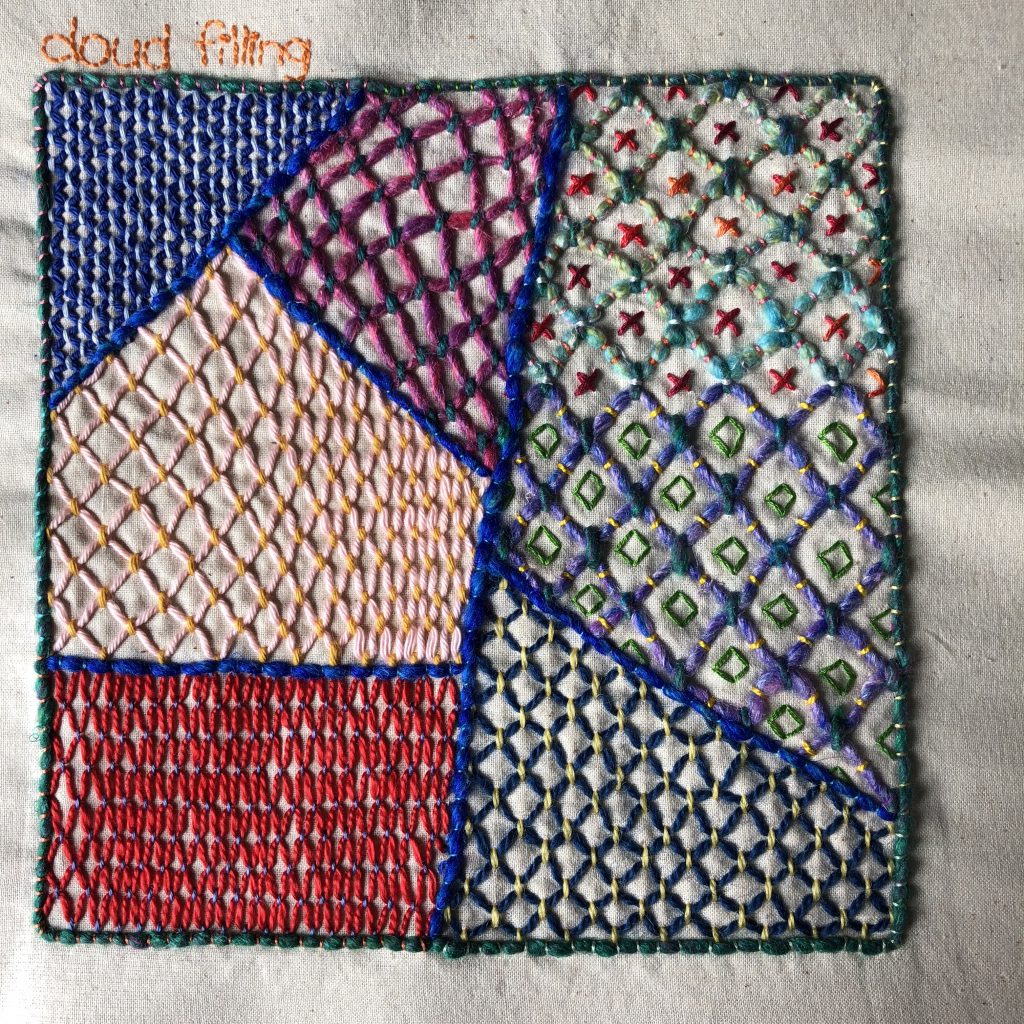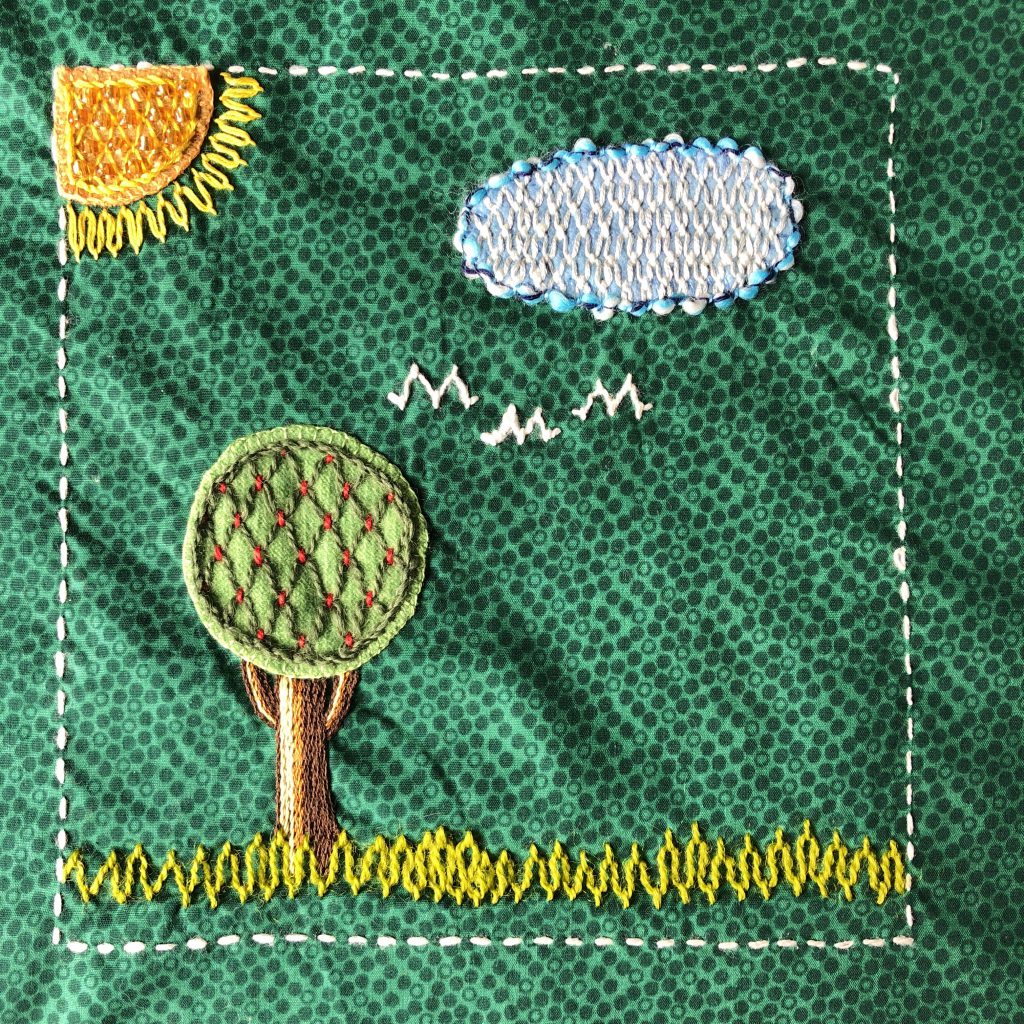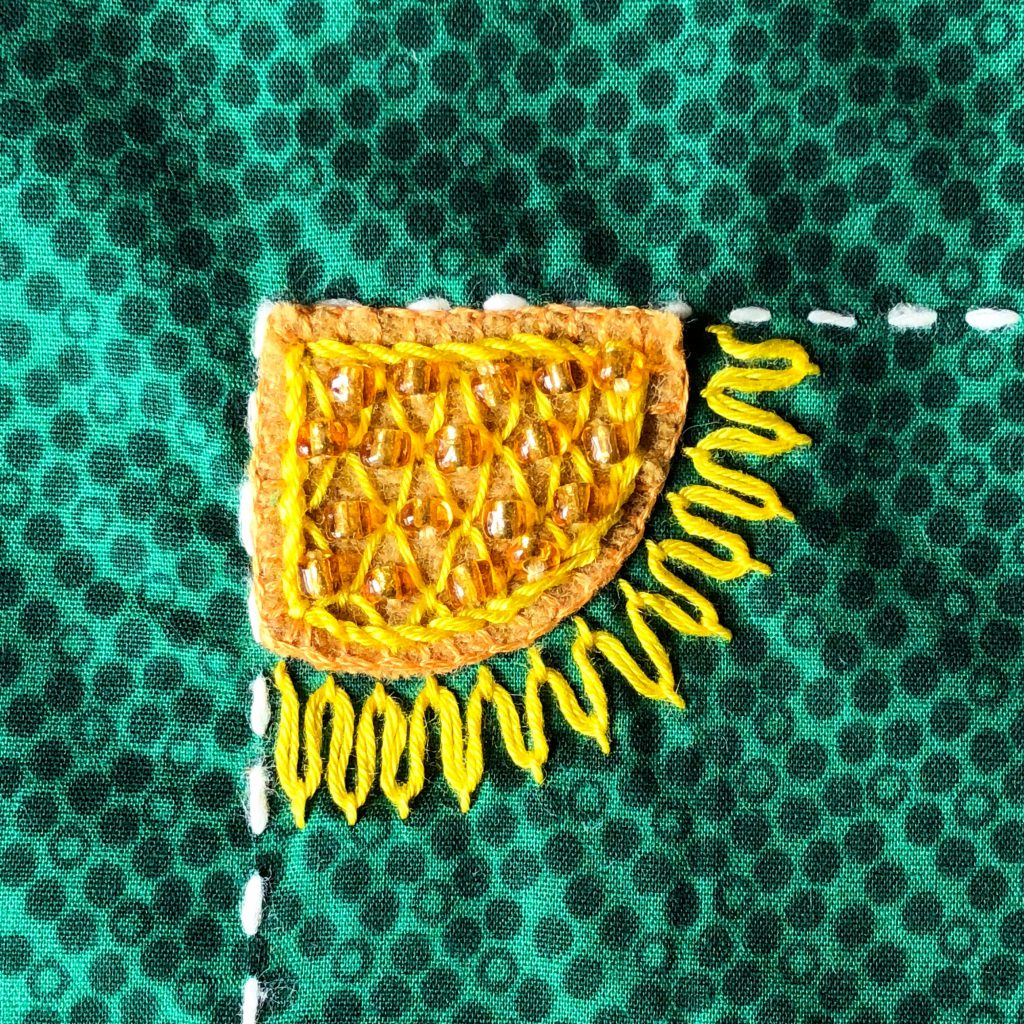This year, as well as rerunning the regular TAST, Sharon Boggon is also running “Beyond TAST” for those of us who finished TAST already. In Beyond TAST, we spend 4-6 weeks investigating a stitch family or technique.
The first technique was pattern darning. Being me, I ended up making 5 of my 8″/20cm square samplers. For my first piece I wanted to use darning as the background. I layered fabric scraps, basted them with sewing thread and then darned, and darned, and darned some more. You may be able to see that I changed colours so the darning looks like patches as well, but they’re in different shapes to the fabric patches underneath.
When I got tired of that, I added a flower, and finished the whole piece by zig-zagging all the way round with my sewing machine. I zig-zagged with two threads together in a large needle (I think it’s a denim needle). Even though my machine will sew through almost anything, it struggled with thick fabric on the left and thin on the right hand side, so I had to pull it through a bit. I really love the effect of using two threads in the machine together, I’m going to try it with some free motion machine embroidery in future.
My next samplers were inspired by Kantha embroidery.
Border patterns and fillings. (See my Kantha Pinterest board for more). I drew the basic lines for each border with a water erasable pen before stitching.
Then I tried pattern darning used as fillings and to make flowers. I made some double folded hems around the brown fabric and stitched them down with running stitch. I also kept to a very limited colour palette of yellow, green and blue. Limited colour palettes are unusual for me, as I usually restrict myself to using all of them 😉
Finally, in my Kantha inspired samplers I made parallel rows of darning with threading through the stitches to form the patterns. I used an unusual fabric for this, glazed cotton with a floral pattern on it. I think it worked well.
And of course, no investigation into patterned running stitch is complete without a little Sashiko. Embroidered on the same glazed cotton as the previous sampler using two strands of variegated perle cotton. I ran out at the last row and substituted other plain threads of the same colour but they ended up being a bit thicker. Oops.
I used Sew Easy templates and a water erasable marker to draw out the design
Next up I’ll show you my latest Dropcloth sampler. I’ve almost finished, although it’s currently drying because I spilled something on it. Hopefully tomorrow it will be dry and I can finish it.


